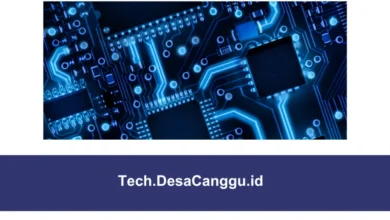Electronic Prescription Systems: Advantages for Patients and Providers Alike

In today’s digital age, technological advancements have revolutionized many aspects of healthcare, including the way prescriptions are managed and transmitted. Electronic Prescription Systems (EPS) have emerged as a modern solution to streamline the prescribing process, offering numerous benefits for both patients and healthcare providers. In this blog post, we’ll explore the advantages of electronic prescription systems and how they are transforming the healthcare landscape.
1. Improved Accuracy and Legibility
One of the most significant advantages of electronic prescription systems is the elimination of handwritten prescriptions, which are prone to errors and misinterpretation. By digitizing the prescribing process, healthcare providers can generate clear, legible prescriptions that reduce the risk of medication errors, such as incorrect dosages or medication names. Improved accuracy ultimately enhances patient safety and reduces the likelihood of adverse drug events.
2. Enhanced Efficiency and Convenience
Electronic prescription systems streamline the prescription process, saving time for both patients and healthcare providers. With EPS, prescriptions can be generated, transmitted, and processed electronically, eliminating the need for paper-based workflows and manual data entry. Patients can have their prescriptions sent directly to the pharmacy of their choice, avoiding the hassle of dropping off paper prescriptions and waiting for them to be filled. Similarly, healthcare providers benefit from streamlined workflows and reduced administrative burdens, allowing them to focus more on patient care.
3. Real-Time Access to Patient Information
Electronic prescription systems provide healthcare providers with real-time access to patient information, including medication history, allergies, and drug interactions. This comprehensive view of a patient’s medical profile allows providers to make more informed prescribing decisions, ensuring that prescribed medications are safe and appropriate for the individual patient. Real-time access to patient information also enables healthcare providers to coordinate care more effectively across different healthcare settings and specialties.
4. Integration with Electronic Health Records (EHRs)
Electronic prescription systems are often integrated with electronic health record (EHR) systems, creating a seamless and interconnected healthcare ecosystem. Integration with EHRs allows for the automatic updating of patient records with prescription information, facilitating continuity of care and reducing duplication of efforts. Healthcare providers can access comprehensive patient records, including prescription history, lab results, and clinical notes, all within a single, unified system.
5. Facilitated Medication Adherence
Electronic prescription systems support medication adherence by providing patients with easier access to their prescribed medications. With electronic prescriptions sent directly to the pharmacy, patients can conveniently pick up their medications without the need for paper prescriptions. Additionally, electronic prescription systems can send automated refill reminders to patients, prompting them to refill their medications in a timely manner and avoid interruptions in therapy. Improved medication adherence leads to better health outcomes and reduced healthcare costs associated with preventable complications.
6. Enhanced Security and Privacy
Electronic prescription systems offer enhanced security and privacy protections compared to traditional paper-based prescriptions. Electronic prescriptions are encrypted and transmitted securely, reducing the risk of unauthorized access or tampering. Additionally, electronic prescription systems often include built-in safeguards, such as two-factor authentication and audit trails, to ensure the integrity and confidentiality of prescription data. By leveraging advanced encryption and authentication technologies, electronic prescription systems help safeguard patient information and protect against potential security breaches.
7. Cost Savings and Sustainability:
Implementing electronic prescription systems can result in cost savings for healthcare providers and pharmacies by reducing paper and administrative costs associated with traditional prescribing methods. Electronic prescriptions eliminate the need for paper, printing, and postage, resulting in significant savings over time. Additionally, electronic prescription systems contribute to environmental sustainability by reducing paper waste and carbon emissions associated with paper-based workflows.
Challenges and Considerations
While electronic prescription systems offer many benefits, their implementation is not without challenges. Healthcare organizations must address several considerations to maximize the effectiveness and efficiency of electronic prescribing:
- Interoperability: Ensuring interoperability between different electronic prescription systems and healthcare IT platforms is essential for seamless information exchange. Standardized protocols and data formats facilitate communication between systems, enabling healthcare providers to access patient information across different settings and platforms.
- Training and Education: Healthcare providers and staff require adequate training and education to effectively use electronic prescription systems. Training programs should cover system functionalities, best practices for prescribing, and compliance with regulatory requirements. Ongoing support and refresher training can help ensure continued proficiency and adoption of electronic prescribing practices.
- Patient Engagement: Engaging patients in the electronic prescribing process is key to promoting medication adherence and patient satisfaction. Healthcare organizations can educate patients about the benefits of electronic prescriptions, encourage them to participate in medication management, and provide resources for accessing and managing their prescriptions online.
- Data Security and Privacy: Protecting patient data is paramount in electronic prescribing systems. Healthcare organizations must implement robust security measures to safeguard electronic prescription data against unauthorized access, breaches, and cyber threats. Compliance with data privacy regulations, such as HIPAA in the United States, is essential to maintain patient trust and confidentiality.
- Accessibility and Equity: Ensuring equitable access to electronic prescription systems is essential to avoid exacerbating healthcare disparities. Healthcare organizations should consider the needs of diverse patient populations, including those with limited digital literacy, language barriers, or disabilities. Providing alternative methods for accessing electronic prescriptions, such as phone-based or in-person assistance, can help ensure equitable access for all patients.
Conclusion
In conclusion, electronic prescription systems offer numerous advantages for both patients and healthcare providers, ranging from improved accuracy and efficiency to enhanced medication adherence and security. By embracing electronic prescribing technology, healthcare organizations can modernize their prescribing workflows, enhance patient safety, and deliver more efficient and convenient care. As electronic prescription systems continue to evolve and become more widespread, they will play an increasingly integral role in shaping the future of healthcare delivery.



